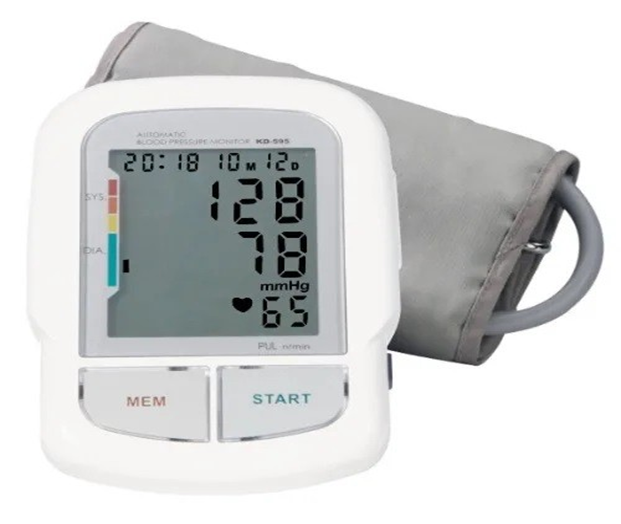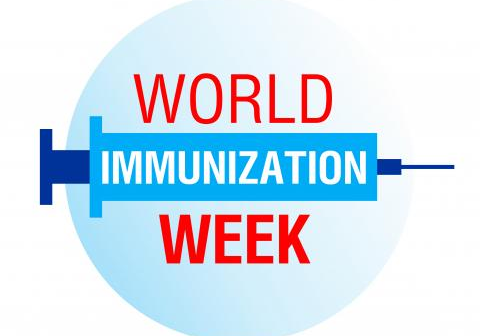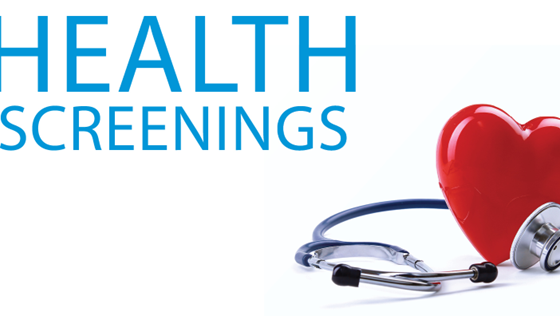Introduction
Blood pressure is the force of blood against the walls of vessels during flow. It is measured using two numbers arranged in numerator and denominator: systolic (the top number, which measures the pressure when the heart beats) and diastolic (the bottom number, which measures the pressure when the heart rests between beats). A normal blood pressure reading is around 120/80 mmHg.
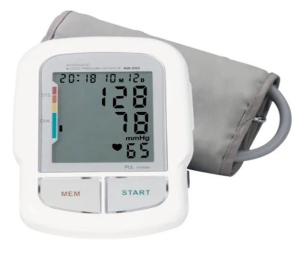
Credit: Equip Med Mall
Monitoring blood pressure (BP) is crucial for controlling and avoiding cardiovascular disease and hypertension. Before technological advancements only manual blood pressure measurements were done, people may now check their blood pressure more easily because of home blood pressure monitors and technological improvements (smart watches). But occasionally, readings can be off, which can cause uncertainty or worry. Erroneous readings can be attributed to various things, from equipment problems to operator errors.
This article will discuss the potential causes of inaccurate blood pressure measurements and the solutions to these problems.
Read also “Understanding Hypertension”
Parts of A Blood Pressure Monitor
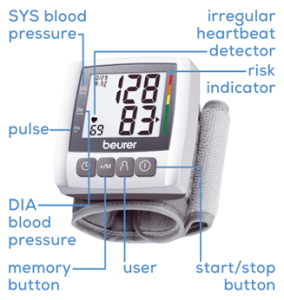
Credit: Shop Beurer
Usually, a blood pressure electronic monitor has the following essential components:
- Cuff/Arm Band/Wrist Band: This is an inflatable band constructed of fabric with an inflatable inner bladder that is placed around the upper arm, or wrist in certain types, to temporarily stop blood flow.
- Display/Screen: In digital devices, this screen displays additional data such as pulse rate in addition to the systolic and diastolic.
- Microprocessor: This internal part of digital monitors computes blood pressure measurements by analyzing blood flow and pressure information.
- Power Source: Batteries or an AC adaptor are used to power digital blood pressure monitors.
10 Reasons Why A Blood Pressure Monitor Can Give You Inaccurate Readings
There are so many reasons why your smartwatch, at-home blood pressure monitor, and other electronic devices can give you an inaccurate reading. Reasons include:
1. The wrong size cuff/wristband
Using an improperly fitting cuff is one of the most frequent reasons for measurements of blood pressure that are not correct. The cuff won’t give an accurate measurement if it is too tiny or large.
An inadequate cuff size may cause erroneously high blood pressure readings while incorrectly low readings can be obtained with an excessively big cuff. To guard against such recordings make sure the cuff fits your arm/wrist. Additionally, roughly 80% of the circle of your arm should be covered by the inflatable portion of the cuff for your monitors.
2. Incorrect Cuff Positioning
It matters where on your arm the cuff is positioned to get reliable readings. A cuff positioned incorrectly could result in readings that are off and wearing the cuff over clothing can lead to erroneous readings.
For correct placement of arm blood pressure monitors, the cuff should be at heart level, exactly on your naked skin (not over clothing), and about an inch above the elbow crease (above the elbow on your bare arm).
3. Improper Body Posture
Accurate blood pressure readings are mostly dependent on your posture during the reading. Incorrect laying or sitting can have an impact on the outcome. For example, your blood pressure reading may increase if your legs are crossed or if your feet are not flat on the ground. An erroneous reading may result from sitting with your arm resting unsupported or without support for your back.
To get the most accurate reading, sit in a comfortable chair with a straight back, place your feet flat on the floor, extend your legs, and stretch out your arms to be placed on the table at heart level.
4. Talking or Moving During Measurement
During the reading, moving or talking could cause your blood pressure to rise unnaturally, which could lead to an inaccurate reading. Talking or moving while the blood pressure machine is inflating or deflating can cause the system to sense extra movement, which may lead to inaccurate readings.
To ensure the most accurate readings, after sitting in a comfortable position, take a few deep breaths, and try not to fidget as you remain motionless and silent throughout the process.
5. Having A Full Bladder
Having a bladder full of urine or being pressed before measurement can cause inaccuracies in blood pressure measurement. When the bladder is filled with urine it puts pressure on the kidney which can inadvertently put pressure on your cardiovascular system to give false measurements.
Research shows that the systolic pressure can rise by ten to fifteen mm Hg when the bladder is full in contrast, emptying the bladder significantly decreases blood pressure readings. To forestall this, use the bathroom before you sit for blood pressure measurement.
6. Measuring Blood Pressure Immediately After Physical Activity
Physical activity, including walking or climbing stairs, can also cause a temporary rise in blood pressure leading to an inaccurate reading if not accounted for. Rest for about 5 minutes after physical activity before taking a blood pressure measurement.
7. Anxiety or Stress
If your blood pressure is being measured by a family member, third party, or medical professional, there may be a transient increase in blood pressure during the test as a result of emotional tension or anxiety.
Additionally, if your blood pressure is being measured by a medical professional and due to anxiety there could be an unusual spike, this is referred to as “white coat hypertension“. White coat hypertension is the term for when you get a high blood pressure reading in a clinical setting and a normal blood pressure reading at home.
The solution to a spike in blood pressure due to stress and anxiety is to try to unwind before using the blood pressure monitor to ensure an accurate reading. Whether in a doctor’s office or at home always remain calm for a more precise and accurate measurement.
8. Taking Too Many Readings at Once
It is crucial to allow your blood pressure to stabilize in between assessments. Taking several readings too soon after one another may lead to inconsistent and perhaps inaccurate results. It is best to wait at least 1-2 minutes between consecutive readings to allow the blood flow to recover to normal.
9. Problems with Device and Machine Calibration
Your blood pressure monitor may provide inaccurate readings if it hasn’t been calibrated or verified for accuracy in a while. BP devices can become less accurate with time, especially if they are used regularly and they should be checked for accuracy regularly.
The best course of action for at-home monitors and smart devices is to take them to a specialist for recalibration at least once a year, periodically consult the handbook for advice on how to maintain or adjust your machine, and visit your doctor regularly to ensure the values got from your devices are accurate.
10. Defective or Worn-Out Equipment
A malfunctioning, broken, or battery-drained machine may produce inconsistent findings or values that are consistently high or low. Your blood pressure monitor may become incorrect over time due to wear and tear as inaccurate results can arise from several factors, including a leaking cuff, failing sensors, and low batteries.
You should check your blood pressure monitor regularly and change the batteries when necessary. If the device is a few years old, you might want to get a newer, more precise model.
Measuring blood pressure remains a crucial part of controlling hypertension and keeping an eye on your cardiovascular health. The instrument used to measure blood pressure has gone through so many innovations and is a crucial part of blood pressure measurement. The accuracy of your at-home blood pressure readings can be significantly increased by ensuring the cuff is the right size, placement, and body position, as well as by controlling stress and equipment conditions. To prevent inaccurate results, always ensure your machine is calibrated correctly and adhere to best practices.
Conclusion
At Wellahealth, we are committed to assisting you in maintaining your health and wellness that is why we are proactive about educating you about knowing your numbers and providing affordable and accessible plans that can help in the management of hypertension.
Additionally, Wellahealth is leveraging innovative digital health solutions to bridge the gaps that exist in healthcare access and delivery in Africa. Through mobile health platforms and Meditrina, individuals can conveniently monitor their blood pressure, access personalized health information, and connect with healthcare providers for guidance and support. To subscribe to any of our health plans and Meditrina contact us today!
Article written by Dr. Ifeoma M. Uduh (BDS)
Edited by Dr. John Afam-Osemene (MBBS, DA)
